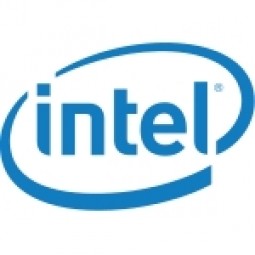Case Studies.
Add Case Study
Our Case Study database tracks 18,927 case studies in the global enterprise technology ecosystem.
Filters allow you to explore case studies quickly and efficiently.
Download Excel
Filters
-
(3)
- (1)
- (1)
- (1)
-
(3)
- (1)
- (1)
- (1)
-
(3)
- (3)
- (1)
-
(2)
- (2)
-
(2)
- (2)
- View all 8 Technologies
- (2)
- (1)
- (1)
- (1)
- (1)
- View all 7 Industries
- (2)
- (2)
- (2)
- (1)
- (1)
- View all 5 Functional Areas
- (2)
- (1)
- (1)
- (1)
- (1)
- View all 6 Use Cases
- (8)
Selected Filters

|
Improving Vending Machine Profitability with the Internet of Things (IoT)
The vending industry is undergoing a sea change, taking advantage of new technologies to go beyond just delivering snacks to creating a new retail location. Intelligent vending machines can be found in many public locations as well as company facilities, selling different types of goods and services, including even computer accessories, gold bars, tickets, and office supplies. With increasing sophistication, they may also provide time- and location-based data pertaining to sales, inventory, and customer preferences. But at the end of the day, vending machine operators know greater profitability is driven by higher sales and lower operating costs.
|
|

|
Predictive Maintenance Drives Smarter Fleet Management
Fleet managers are turning to predictive analytics to stay on top of maintenance and mitigate part failures before they happen. However, managing the large amount of new data generated by vehicle sensors is challenging.
|
|

|
SAS® Analytics for IoT: Smart Grid
Companies face falling revenues, rising infrastructure costs, and increasing risk of outages caused by inconsistent energy production from renewable sources. Less money is coming in as more people and organizations take steps to curb their energy use. Utilities are paying more to maintain and build infrastructure due to increasing complexity, resulting from the rising number of intermittent and variable renewable energy sources connected in the distribution grid.
|
|

|
A Smarter Brain for Your Train…
Have you ever felt overloaded by too much sensory input? The results can be problematic, even risky if you’re driving at the time. The same holds true for trains, ships, oil rigs, and many other industrial assets. The data processing challenges on these complex machines are growing rapidly as the number of sensors increases; yet so are the opportunities to transform operations by using all the available data effectively. A modern locomotive, for example, has as many as 200 sensors generating more than a billion data points per second.
|
|

|
Machine Learning Helps Intel Rediscover Their Customer Demographic
Intel’s sales and marketing organization strives to increase communications with resellers relating to new industry segments as they evolve and to encourage resellers to join webinars or conferences to gain a better understanding of Intel’s offerings for these new markets. Because sales and marketing teams must focus their resources on those resellers with the highest probability of generating sales, sending the right message to the right reseller helps drive value for the sales pipeline. We needed a machine-learning system to help our sales and marketing teams identify the best prospects within Intel’s large pool of resellers.
|
|

|
GenoSpace Boosts Population Analytics and Application Performance
Since maintaining the confidentiality of human genetic data is of paramount importance to GenoSpace, the company has made security a top priority. In an environment where breaches involving healthcare data have reached alarming levels, GenoSpace understands the costly business impact of noncompliance with HIPAA patient privacy regulations and industry-leading data security practices. For example, the Identity Theft Resource Center’s 2014 annual list of security breaches points out that the medical/healthcare sector accounted for more than 42.5% of all the breaches listed, topping all other categories. Since reporting requirements began, the US Department of Health and Human Services has tracked 944 incidents involving approximately 30 million individuals. Along with the persistence and enormity of this problem comes financial fallout. For example, in its study, 2014 Cost of Data Breach Study: Global Analysis, the Ponemon Institute estimated that the average cost of a data breach in 2014 was $3.5 million, an increase of 15% over 2013. Additionally, the average cost per record across all sectors also increased, from $188 to $201—and the per capita cost for healthcare was the highest across all industries at $316 per patient. And the typical fine for a data breach runs up to $1.5 million per incident. The cost of breaches to the healthcare sector overall is estimated at $5.6 billion annually.
|
|

|
Adding Intelligence to Airport Transfers
Maintain Momentum Airports need to keep billions of passengers moving every year, while aligning with strict security protocols. Improve Control Airport buses need careful and constant logistical management, with dispatchers tracking operational, capacity and geographic data for each bus. Enhance the JourneyPassengers appreciate being well informed about where to go next, so easily accessible and available details enrich their traveling comfort.
|
|

|
Enhancing The Supply Chain With Intel Architecture
Support more complex business needsBoth the increasing number of customers and more complex business demand a higher-performing acquisition planning system (APS) to ensure stable and reliable operation. Improve business agilityImprove the flexibility of the APS to increase business agility. Reduce costsEnhance the APS with better performance and higher scalability at a lower cost to enable the company's future development.
|
|

